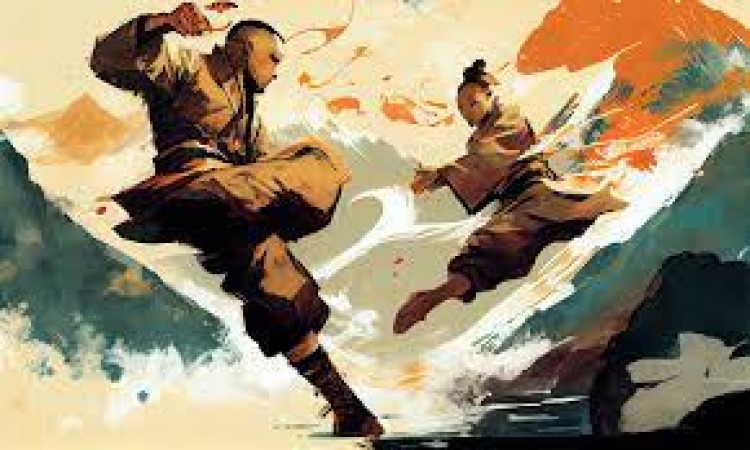
Kung Fu, an ancient Chinese martial art form, has captivated the world with its awe-inspiring movements and profound philosophy. With roots dating back centuries, Kung Fu embodies not just physical prowess but also a spiritual journey. This article delves into the fascinating world of Kung Fu, exploring its origins, diverse styles, and the unique animal-based techniques that make it a truly extraordinary martial art.
The Origins of Kung Fu
Kung Fu traces its beginnings to the legendary Shaolin Temple, nestled in the Henan province of China. The monks of Shaolin developed this art form as a means of self-defense and spiritual enlightenment. Over time, it evolved into a comprehensive system of martial arts that spread across the country and later found global recognition.
Understanding the Core Principles of Kung Fu
At the heart of Kung Fu lies a set of fundamental principles that practitioners adhere to. These principles include discipline, respect, humility, perseverance, and the continuous quest for self-improvement. The combination of physical techniques and philosophical teachings makes Kung Fu a holistic martial art that nurtures both the body and the mind.
The Diversity of Kung Fu Styles
Kung Fu is not a singular style but rather a collective term for an array of martial arts styles. Some of the most renowned styles include:
Shaolin Kung Fu
Originating from the Shaolin Temple, this style is characterized by its dynamic and powerful movements. It incorporates a wide range of techniques, including kicks, punches, and acrobatics.
Wing Chun
Known for its efficiency and directness, Wing Chun focuses on close-range combat and quick strikes. It is often associated with the legendary martial artist, Bruce Lee.
Tai Chi Chuan
In stark contrast to the intense movements of other styles, Tai Chi Chuan is a slow and graceful form of Kung Fu. It emphasizes relaxation, balance, and internal energy cultivation.
Baguazhang
Baguazhang is renowned for its circular footwork and palm techniques. Practitioners move in a circular path, making it a unique and fluid style.
Xingyiquan
Xingyiquan is characterized by its linear and aggressive movements. It draws inspiration from the Chinese philosophy of the Five Elements and imitates their respective combat characteristics.
Exploring Animal-Based Techniques in Kung Fu
One of the most intriguing aspects of Kung Fu is its association with animal-based techniques. Masters observed and imitated the movements of animals, resulting in a range of styles that mimic their unique traits. Some of these animal-based techniques include:
Tiger Style
Emulating the strength and ferocity of the tiger, this style focuses on powerful strikes and quick footwork.
Crane Style
The Crane Style emphasizes grace and balance, taking inspiration from the elegant movements of cranes.
Snake Style
Mimicking the agility and flexibility of snakes, this style incorporates intricate and unpredictable strikes.
Dragon Style
The Dragon Style symbolizes majesty and power, employing flowing movements and circular techniques.
Leopard Style
Characterized by its speed and precision, the Leopard Style is swift and aggressive in its approach.
Praying Mantis Style
This style imitates the fluid and deadly movements of the praying mantis, with an emphasis on trapping and controlling opponents.
Monkey Style
Taking cues from the playful and acrobatic nature of monkeys, this style incorporates flips, jumps, and spins.
Eagle Style
The Eagle Style mimics the sharp-eyed and swift movements of eagles, employing claw-like strikes and aerial maneuvers.
The Connection between Kung Fu and Nature
Kung Fu's animal-based techniques reflect a deep connection with nature. Practitioners not only learn from the movements of animals but also seek to embody their spirit and characteristics.
Training and Discipline in Kung Fu
The path of Kung Fu is not an easy one. Training involves rigorous physical exercises, meditation, and the memorization of forms. Discipline and perseverance are essential for a practitioner's progress.
Kung Fu Legends and Masters
Throughout history, Kung Fu has been shaped by legendary masters who have left an indelible mark on the art. From Bodhidharma, who is credited with the creation of Shaolin Kung Fu, to modern masters like Ip Man, Kung Fu's lineage is rich with influential figures.
The Popularity and Influence of Kung Fu in Modern Culture
Kung Fu has transcended its origins and become a global cultural phenomenon. Its impact can be felt in movies, television, literature, and even sports. The awe-inspiring stunts and philosophical depth portrayed in Kung Fu movies have captivated audiences worldwide.
Benefits of Practicing Kung Fu
Beyond self-defense, Kung Fu offers a plethora of benefits. Improved physical fitness, increased mental focus, stress relief, and enhanced self-confidence are just a few of the positive outcomes that practitioners can experience.
Addressing Common Misconceptions about Kung Fu
Despite its popularity, Kung Fu is often misunderstood. Addressing misconceptions is essential to appreciate the true essence and value of this ancient martial art. Kung Fu stands as a testament to the human spirit's capacity for physical and spiritual growth. Its diverse styles and animal-based techniques showcase the depth and beauty of Chinese martial arts. By nurturing a connection with nature and oneself, Kung Fu continues to inspire and influence generations worldwide.
Hockey India announces 18-member squad for Asian Champions Trophy 2023
Volleyball: A Universal Language of Unity and Friendship in the Olympics
MotoGP Finally to raise the Premium Accessibility at the Silverstone Race